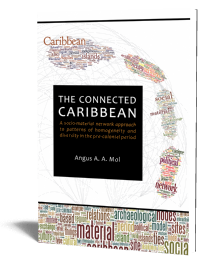Abstract:
An Archaeology of Exchange is primarily an archaeology of human sociality and anti-sociality. Nevertheless, archaeological studies of exchange are numerous and varied, and archaeologists do not always approach exchange as a social mechanism, concentrating rather on the cultural, economic or political implications of exchange. Even so, at times it is worth retracing the implicit theoretical steps that archaeologists have taken and look at human sociality through the eyes of exchange as something new.
This will be undertaken here by concentrating on the exchange of social valuables in the later part of the Late Ceramic Age of the Greater and Lesser Antilles (AD 1000/1100-1492). Questions concerning this exchange will be framed in a novel mix of theories – such as Costly Signalling Theory coupled with the paradox of keeping-while-giving and the notion of gene/culture co-evolution joined with Complex Adaptive System theory. Still, all these theories can be related back to the concept of exchange as put forward by the French sociologist Marcel Mauss in his famous Essai sur le don of 1950.
This theoretical framework will be put to the test by an extensive case-study of a specific category of Late Ceramic Age social valuables: shell faces, which have an area of distribution that ranges from central Cuba to the Île de Ronde in the Grenadines. The study of these enigmatic artefacts will uncover novel insights on the nature and use of social valuables in the Late Ceramic Age by communities and individuals.


Dr.
Angus A.A. Mol
Angus Mol is an assistant professor at the Leiden University Centre for Digital Humanities. Here he teaches and does research, not only on how digital tools can be used in the study of cultures and societies, but also how digital media shape our engagement with the present and past. With a background in archaeology and as a co-founder of VALUE, his research and outreach specifically address the intersections of the past and video games. His previous publications have appeared at Sidestone Press and a number of international journals and handbooks. These include the first Interactive Past volume as well as work in theoretical and Caribbean archaeology and network studies. He also writes blogs and produces other media as Dr. Random on VALUE’s Interactive Pasts website.
read more












